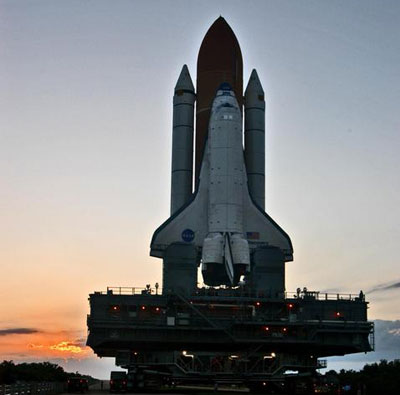Return to flight: has NASA changed enough?by Taylor Dinerman
|
| If they had to wait until all involved agreed that the agency’s culture had been reformed, the shuttle would stay on the ground until the next ice age. |
The CAIB report “…noted that the pre-Challenger layers of processes, boards, and panels that had produced a false sense of confidence in the system and in its level of safety returned in full force prior to Columbia.” The pressures that led to this attitude were in part caused by the serious and sustained budgetary limits under which the agency operated in the 1990s. Another factor was the defensive crouch into which the agency knelt after the whipping it got during the final years of the George H.W. Bush administration: it was always cheaper and safer to hide behind bureaucratic procedures than to tell Congress or the White House that they either would not be able to do something or would need more money.
While the “Faster Better Cheaper” concept was supposed to be confined to unmanned space probes, the mentality behind it seems to have infected to Office of Space Flight. NASA has rarely been a priority program in the post-Apollo era: it is only when its failures become too embarrassing to ignore do the President and the senior leaders in Congress pay attention. Sean O’Keefe’s reforms were driven by the failure of the space station program to stay even close to the agreed-on budget. It was not until after the Columbia disaster that he was forced to look at the deeper causes.
The problem was not the checks and procedures in and of themselves, but the fact that they had become routine, and the tendency had developed to try and explain away non-routine events as tolerable. It was this tendency that led to the acceptance of large-scale foam shedding as normal. NASA cannot promise that this problem has been fixed 100% but one trusts it has been solved to the limit of human capability.
It was about six years ago that the Air Force decided to stop buying Titan 4 launchers. There is one launch left, due to lift off from Vandenberg later this year. The Air Force has not lost a single payload on this heavy launch vehicle since 1999. Since then every time they have used this vehicle they have lavished extra care and paid attention to every possible detail. This is a record that NASA hopes to emulate with the last 20 or so shuttle flights.
| It was always cheaper and safer to hide behind bureaucratic procedures than to tell Congress or the White House that they either would not be able to do something or would need more money. |
This will not only take hard work by all the men and women on the space operations team, but this work will have to be done in the full knowledge that shuttle operations are coming to an end. Politicians who want to keep the Shuttle operating past the 2010 deadline should be asked if they are going to come up with the extra money needed to keep the system going. Whenever the shuttle makes its last flight, either in 2010 or later, NASA is going to need a closeout budget, which apparently has not yet been allocated. Congress and the agency had better start making the budgetary plans soon.
The prayers of the whole nation are going to be riding with the crew of STS-114. As they begin what will be the final series of shuttle missions, the skill and dedication of the whole shuttle team should be recognized. A lot depends on the safe and successful operation of the shuttle during its last flights. The culture of NASA has changed since February 2003, and we all hope it has changed enough. The administrator and his superiors in the executive branch have the responsibility to make the decision; it is up to them to decide if the space agency has reformed itself. If all goes well, we will know the answer in five years.
